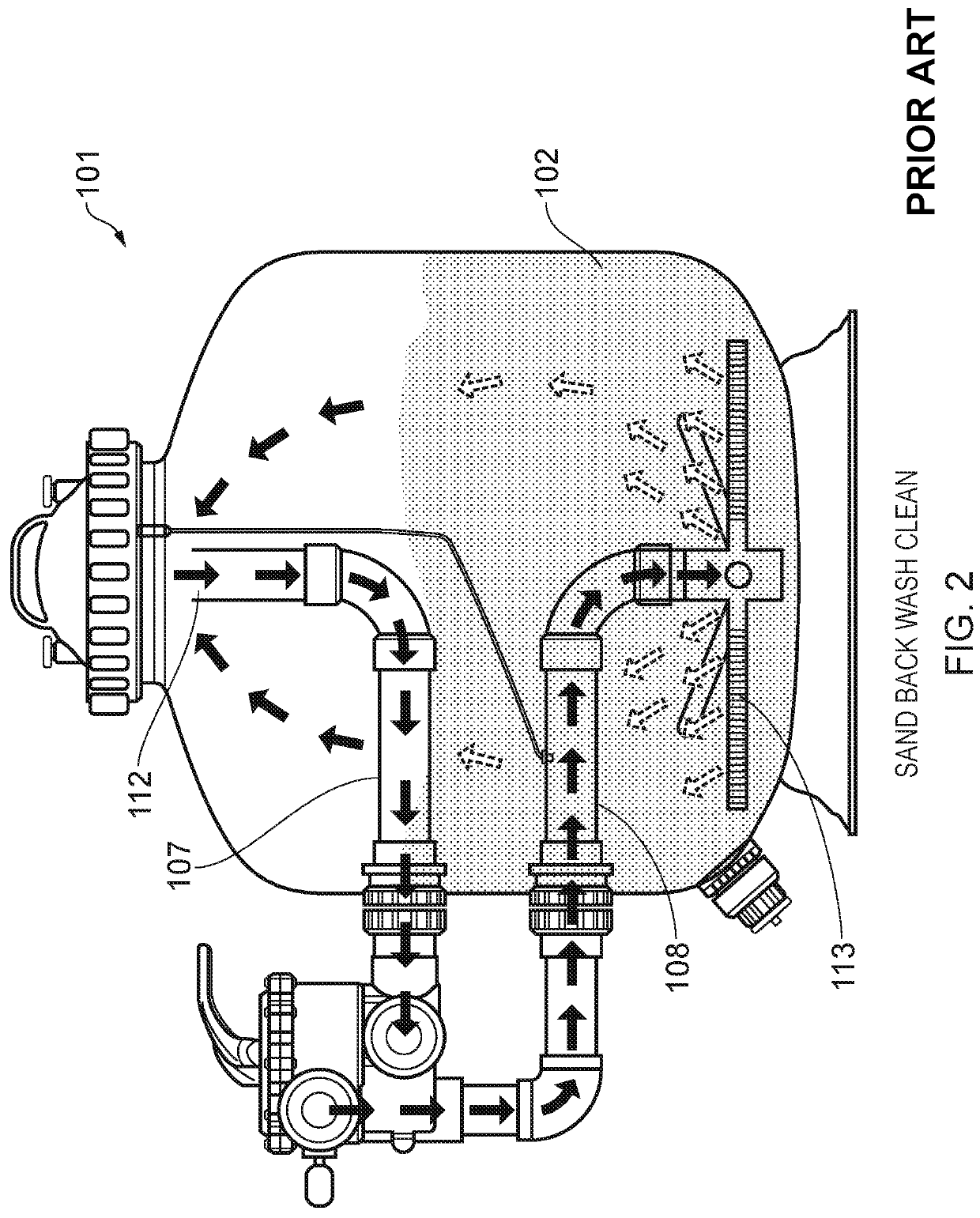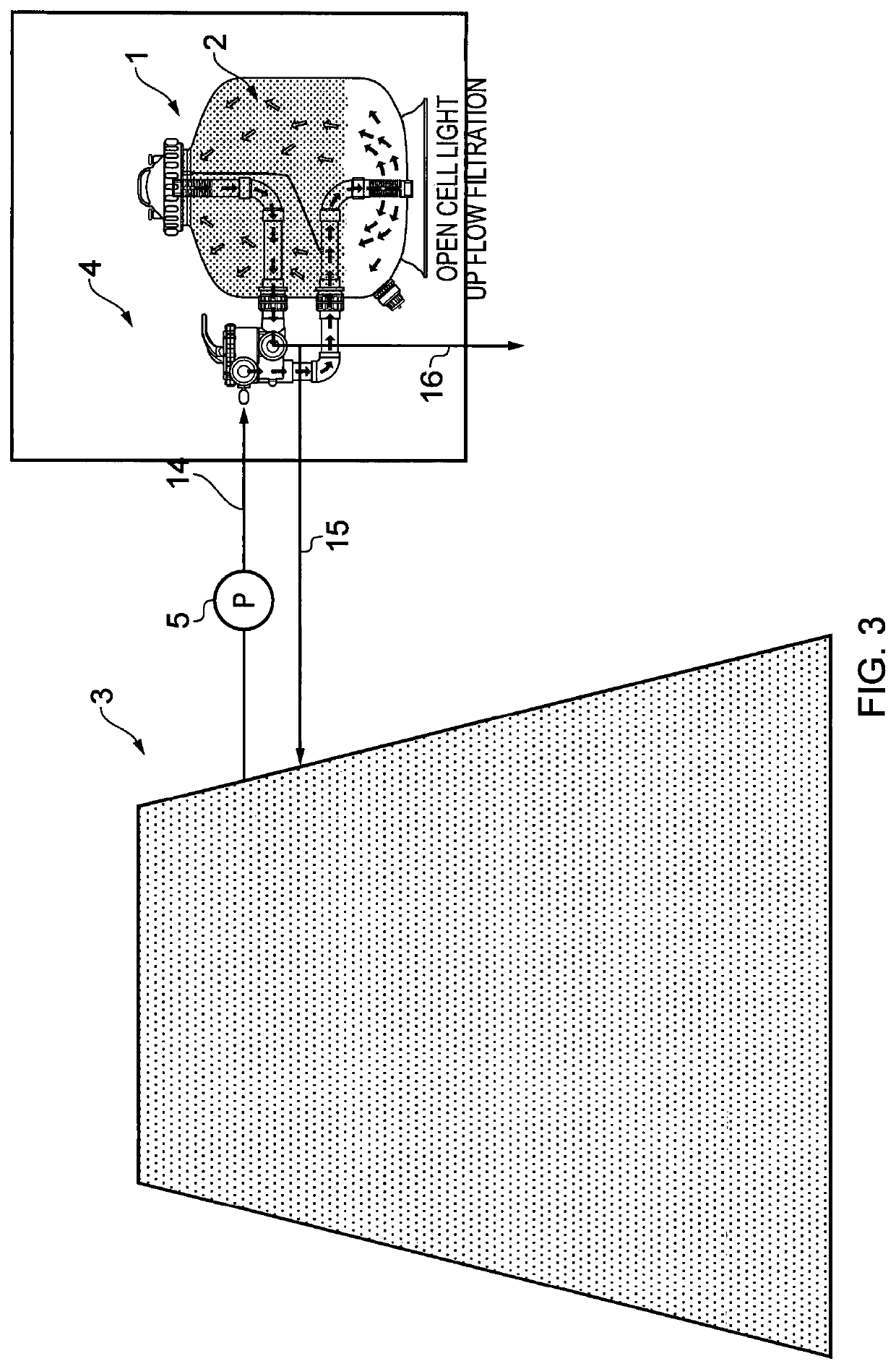Mechanical filter element, apparatus and method
a mechanical filter and element technology, applied in the direction of filtration separation, separation process, treatment involving filtration, etc., can solve the problems of static filter bed 111/b>, bacterial problems associated with potential rise, and various known limitations of mechanical filter apparatus
- Summary
- Abstract
- Description
- Claims
- Application Information
AI Technical Summary
Benefits of technology
Problems solved by technology
Method used
Image
Examples
Embodiment Construction
[0134]A mechanical filter apparatus 1 and mechanical filter elements 2 in accordance with aspects of the present invention will now be described with reference to FIGS. 3 to 11. The mechanical filter apparatus 1 is operable in a filtration mode and a backwash mode. When the mechanical filter apparatus 1 is operating in said filtration mode, the mechanical filter elements 2 mechanically filter the liquid by trapping particulates suspended therein. The trapped particulates can subsequently be dislodged to clean the mechanical filter elements 2 when the mechanical filter apparatus 1 operates in said backwash mode. The filtered particulates can be flushed from the mechanical filter apparatus 1 during the backwash mode or during a separate waste (purge) cycle.
[0135]As shown in FIG. 3, the mechanical filter apparatus 1 in the present embodiment is configured to mechanically filter the water in a swimming pool 3. The water in the swimming pool 3 is treated to suppress biological activity, ...
PUM
| Property | Measurement | Unit |
|---|---|---|
| length | aaaaa | aaaaa |
| length | aaaaa | aaaaa |
| cross-sectional area | aaaaa | aaaaa |
Abstract
Description
Claims
Application Information
 Login to view more
Login to view more - R&D Engineer
- R&D Manager
- IP Professional
- Industry Leading Data Capabilities
- Powerful AI technology
- Patent DNA Extraction
Browse by: Latest US Patents, China's latest patents, Technical Efficacy Thesaurus, Application Domain, Technology Topic.
© 2024 PatSnap. All rights reserved.Legal|Privacy policy|Modern Slavery Act Transparency Statement|Sitemap



